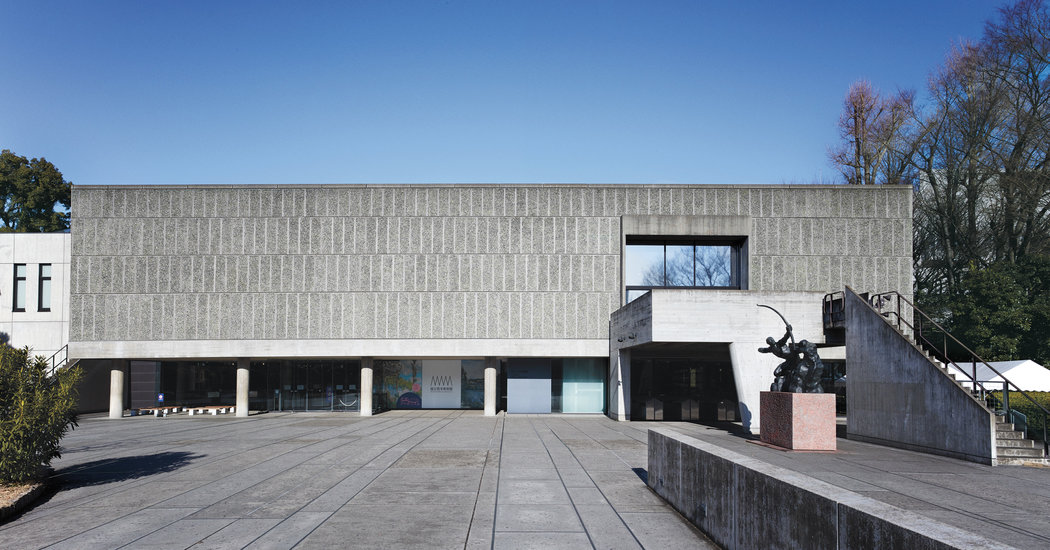
JAPANESE ANXIETY OVER modernity is a cliché of cultural studies, and the fact that Japan in the Meiji period — roughly 1868 to 1912 — resembled Western Europe in this regard is too facile an explanation for its various forms of Modernism: There is simply no comparison between France or England and a country as isolated as Japan experiencing the onrush of capitalist industrialization. But there is something instructive in the fact that, in the 20th century, Modern architects — from Bruno Taut and Frank Lloyd Wright to Walter Gropius — toured Japan and discovered, or so they thought, the antecedents of Modern architecture. By the time he received the commission for the National Museum of Western Art, Le Corbusier’s aesthetic was already mature, and the record is mostly silent on his reaction to Japanese architecture. But the architectural historian Hiroshi Matsukuma — formerly of Maekawa’s firm — has pointed out that Le Corbusier was deeply influenced as a young art student by Japanese woodblock prints, and on his one visit to Japan in 1955, he toured the major temple sites in Kyoto and Nara. And in his last book, he notes, in a caption accompanying a photograph of the museum, how the excellent quality of the site-cast concrete exuded the skill and craftsmanship that can only be found in Japan. Indeed, the slim columns holding up the building are imprinted with wood slats, so that they call to mind the architectural tradition of the country.
Western architects wanted Japanese architecture to redeem Modernism. But what did Japanese architects want from, and to do with, European Modernism? The early results of this encounter suggest the innovations and dissonances that still characterize Japanese attempts to fashion a “Japanese” architecture, well into the country’s current moment of national self-assertion and anxiety. During the war, scarcity of materials led Maekawa to embrace wood architecture; his own house (1942), disassembled in the 1970s but later reconstructed, is an exemplar of neo-traditionalism, with its pitched roof, and sliding glass doors that resemble, in their checkered patterning, the shoji screens of the Japanese vernacular home. Standing prominently at the south facade of the house is a wooden column: Some would see this as a reference to “ridge supporting columns” (munamochi bashira) found at shrines in Ise; Maekawa called it a Modernist piloti. In later years, when confronted with old questions about “Japaneseness,” conducted in the shadow of the war and under American occupation, he tended to exhibit more discomfort in print than he did in his buildings.
In 1953, Kokusai Kenchiku once again hosted a debate: “Nationalism vs. Internationalism.” The erstwhile Corbusians, Maekawa and Sakakura, were part of it, as was the emerging genius Kenzo Tange, Maekawa’s former employee. Tange argued that technology determined the appearance of a country’s architecture, and that Japan, lagging behind the United States, would inevitably exhibit different forms. Maekawa dismissed Japanese attempts to exhibit “Japaneseness” as resulting from an “inferiority complex.” This endlessly recurring argument, known as the “Japan tradition debate” (Nihon dento ronso), came to affect the reception of later Modernists’ work as well.

Be the first to comment